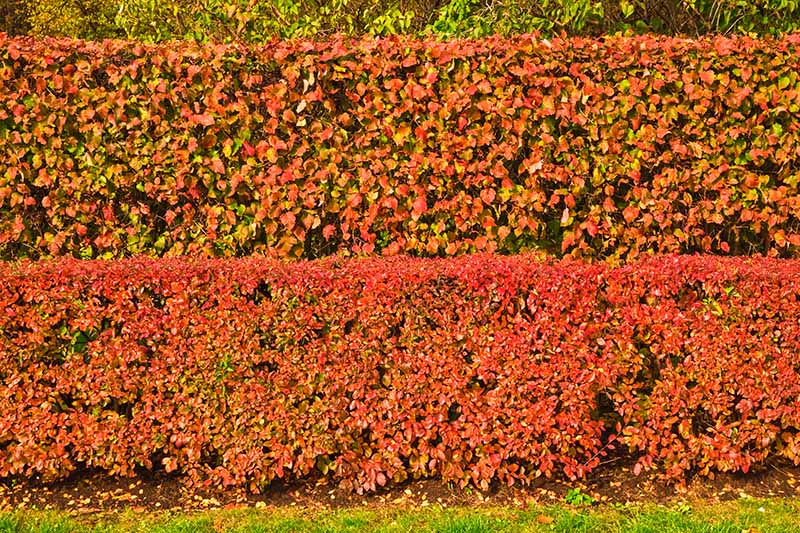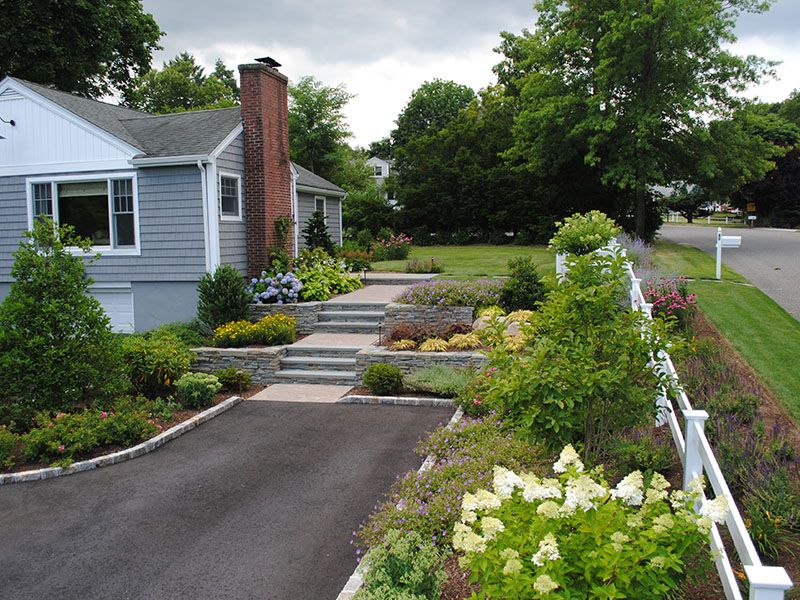How To Grow A Cotoneaster Hedge That Will Wow Your Neighbors
Cotoneasters are a versatile group of shrubs that can be used to create a variety of garden features, including hedges. They are hardy, easy to care for, and can tolerate a wide range of conditions. Cotoneaster hedges can provide privacy, add color and interest to your landscape, and even attract wildlife.
In this blog post, we will discuss how to grow a cotoneaster hedge that will wow your neighbors. We will cover everything from choosing the right variety of cotoneaster to planting and pruning your hedge. We will also provide some tips on how to care for your cotoneaster hedge so that it stays healthy and beautiful for years to come.
Choosing the Right Variety of Cotoneaster
The first step to growing a cotoneaster hedge is to choose the right variety. There are many different varieties of cotoneaster available, so it is important to do your research and choose one that is suited to your climate and growing conditions.
Some factors to consider when choosing a cotoneaster variety include:
- Hardiness: Cotoneasters are generally hardy in zones 4-9, but some varieties are more cold-hardy than others. If you live in a cold climate, you will need to choose a variety that is hardy to at least zone 5.
- Size: Cotoneasters can range in size from small shrubs to large trees. If you are limited on space, you will need to choose a dwarf variety.
- Color: Cotoneasters come in a variety of colors, including red, pink, white, and orange. Choose a variety that will complement the other plants in your landscape.
- Bloom time: Cotoneasters typically bloom in the spring or fall. If you want a hedge that will provide color throughout the year, choose a variety that blooms in both seasons.
Planting Your Cotoneaster Hedge
Once you have chosen the right variety of cotoneaster, you are ready to plant your hedge. Cotoneasters can be planted in the spring or fall.
To plant your cotoneaster hedge, dig a trench that is as wide as the root ball of the plant and twice as deep. Backfill the trench with soil, tamping it down as you go. Water the plant well and mulch around the base of the plant to help retain moisture.
Pruning Your Cotoneaster Hedge
Cotoneaster hedges need to be pruned regularly to maintain their shape and size. The best time to prune cotoneasters is in the spring, before new growth begins.
To prune your cotoneaster hedge, use sharp shears or a pruning saw. Start by trimming the hedge to the desired height. Then, thin out the hedge by removing any dead, diseased, or crossing branches. You can also shape the hedge by removing any branches that protrude beyond the desired shape.
Caring for Your Cotoneaster Hedge
Cotoneaster hedges are relatively low-maintenance. However, they do need to be watered regularly, especially during the first year after planting. You should also fertilize your cotoneaster hedge once a year in the spring.
Cotoneaster hedges are susceptible to a few pests and diseases, including scale, spider mites, and powdery mildew. If you notice any problems with your hedge, you can treat them with an appropriate pesticide or fungicide.
With proper care, your cotoneaster hedge will thrive for many years to come. It will provide you with privacy, beauty, and wildlife habitat.
If you're looking for a beautiful, low-maintenance hedge that can provide privacy and year-round interest, consider cotoneaster. Cotoneaster hedges are a popular choice for both home and commercial gardens, and for good reason. They're hardy, drought-tolerant, and resistant to pests and diseases. They also come in a variety of sizes and shapes, so you can find one that's perfect for your space.
If you're interested in learning more about cotoneaster hedges, I recommend visiting Garden Wiki. This website has a wealth of information on everything from choosing the right type of cotoneaster for your needs to planting and caring for your hedge. You can also find helpful tips on how to prune your hedge to keep it looking its best.
FAQ of cotoneaster hedge
Here are the 5 most frequently asked questions about cotoneaster hedge, along with their answers:
- What is a cotoneaster hedge?
A cotoneaster hedge is a type of shrub that is commonly used to create a dense, ornamental barrier. It is available in a variety of sizes and colors, and can be grown in a variety of climates. Cotoneaster hedges are relatively low-maintenance, and require only occasional pruning to maintain their shape.
- What are the benefits of planting a cotoneaster hedge?
There are many benefits to planting a cotoneaster hedge. They are:
- Dense and attractive: Cotoneaster hedges are very dense, which makes them an effective way to block out unwanted views or noise. They are also very attractive, and can add a touch of beauty to any landscape.
- Low-maintenance: Cotoneaster hedges are relatively low-maintenance. They only require occasional pruning to maintain their shape.
- Drought-tolerant: Cotoneaster hedges are drought-tolerant, which means they can thrive in dry conditions. This makes them a good choice for areas with hot, dry summers.
- Pollinator-friendly: Cotoneaster hedges are pollinator-friendly, which means they attract bees and butterflies. This is beneficial for the environment, and can also help to improve the pollination of other plants in your garden.
- Versatile: Cotoneaster hedges can be used in a variety of settings. They can be used to create privacy screens, borders, or windbreaks. They can also be used to add color and interest to a landscape.
- How do I plant a cotoneaster hedge?
To plant a cotoneaster hedge, you will need to:
- Choose a location that receives full sun or partial shade.
- Prepare the soil by removing any weeds or debris.
- Dig a trench that is the same width as the root ball of the cotoneaster plant.
- Place the plant in the trench and backfill with soil.
- Water the plant thoroughly.
- Mulch around the plant to help retain moisture.
- How do I care for a cotoneaster hedge?
To care for a cotoneaster hedge, you will need to:
- Water the plant regularly, especially during dry periods.
- Fertilize the plant once a year in the spring with a balanced fertilizer.
- Prune the plant in the spring or fall to maintain its shape.
- Protect the plant from pests and diseases.
- How wide does a cotoneaster hedge get?
The width of a cotoneaster hedge will depend on the variety of cotoneaster you plant and the amount of pruning it receives. Some varieties can grow up to 6 feet wide, while others may only grow 3 feet wide. If you are unsure how wide your cotoneaster hedge will get, it is best to err on the side of caution and plant it further away from any structures or other plants that you do not want it to touch.
Image of cotoneaster hedge
5 different images of "cotoneaster hedge" from Pinterest:
- A tall, formal cotoneaster hedge in a garden. The hedge is neatly trimmed and shaped into a rectangle. The leaves are a dark green color and the flowers are white.

- A cotoneaster hedge along a walkway in a park. The hedge is shorter than the one in the previous image, and it is not as neatly trimmed. The leaves are a lighter green color and the flowers are pink.

- A cotoneaster hedge in bloom. The hedge is covered in white flowers. The leaves are a dark green color.

- A cotoneaster hedge in the fall. The leaves on the hedge have turned red and orange. The flowers are no longer visible.

- A cotoneaster hedge as a privacy screen. The hedge is planted along the edge of a property. It is tall and dense, providing privacy from the neighbors.

Post a Comment for "How To Grow A Cotoneaster Hedge That Will Wow Your Neighbors"